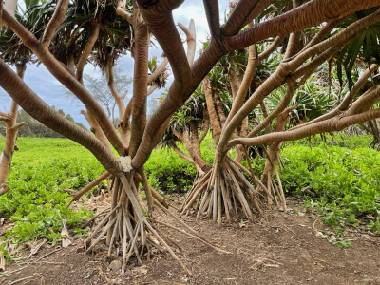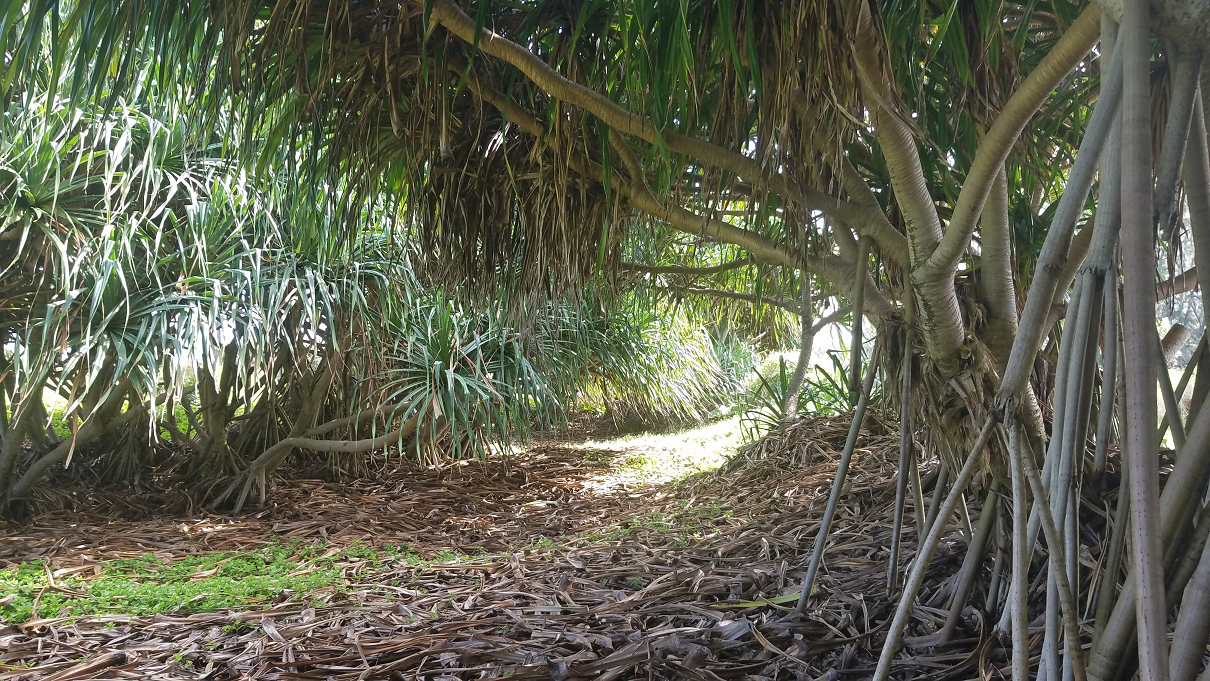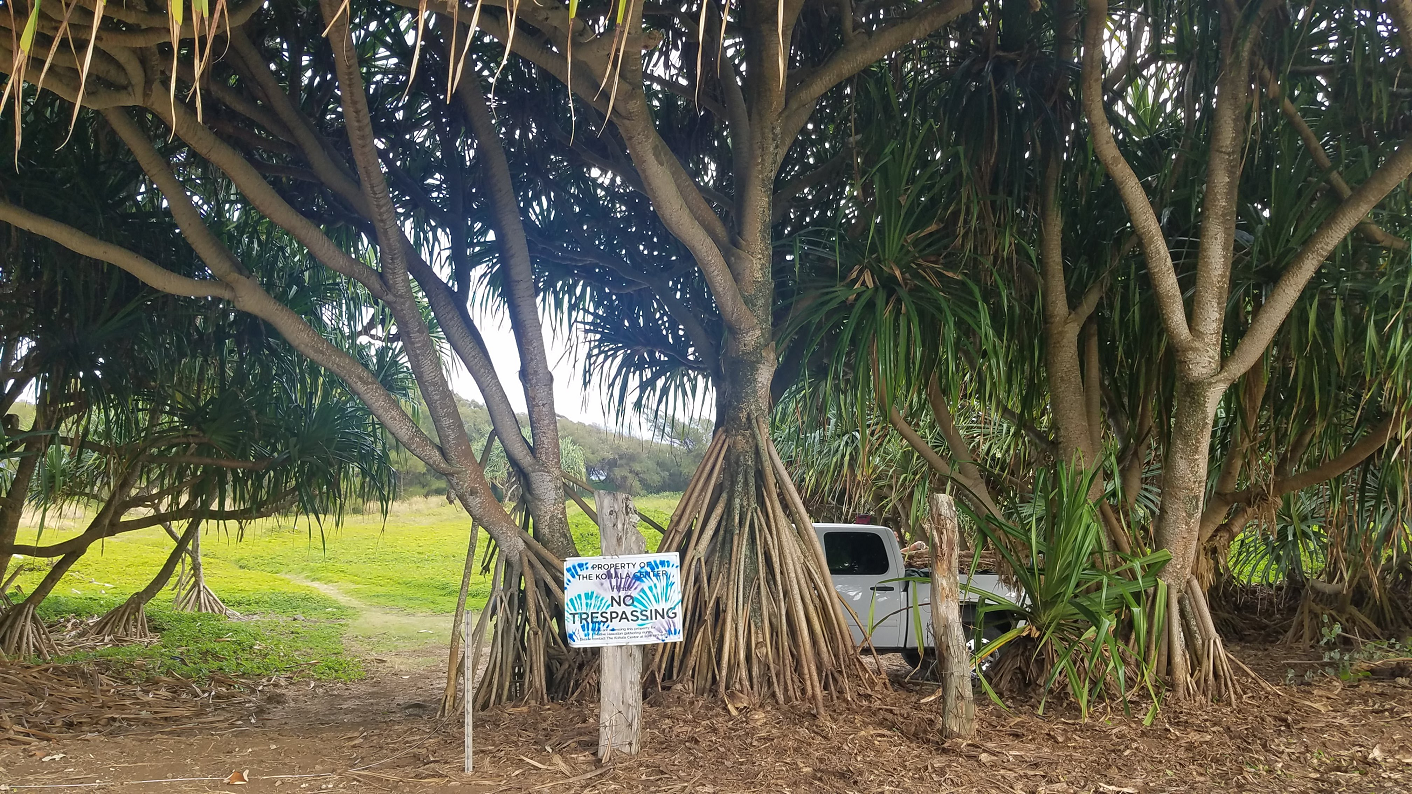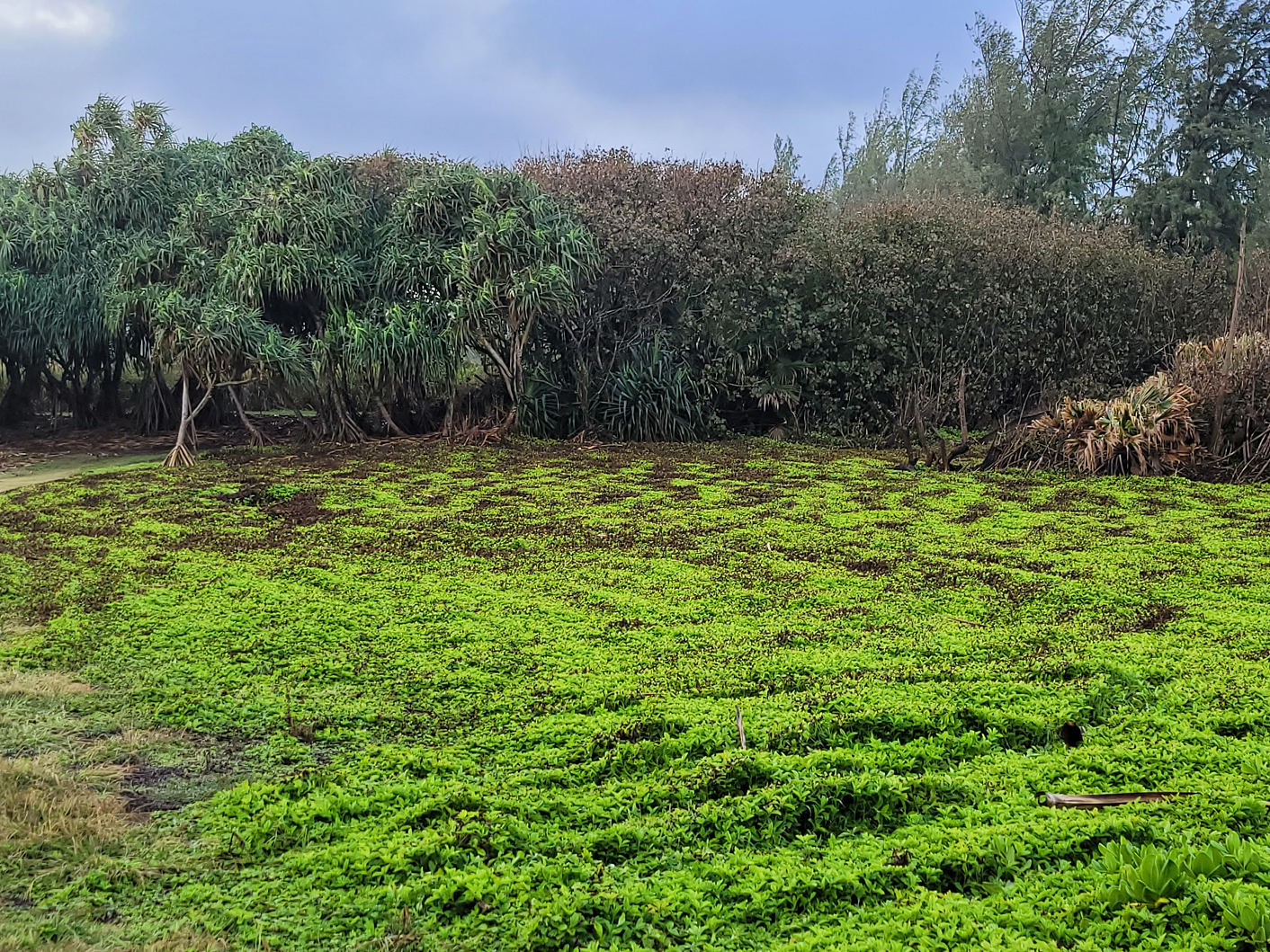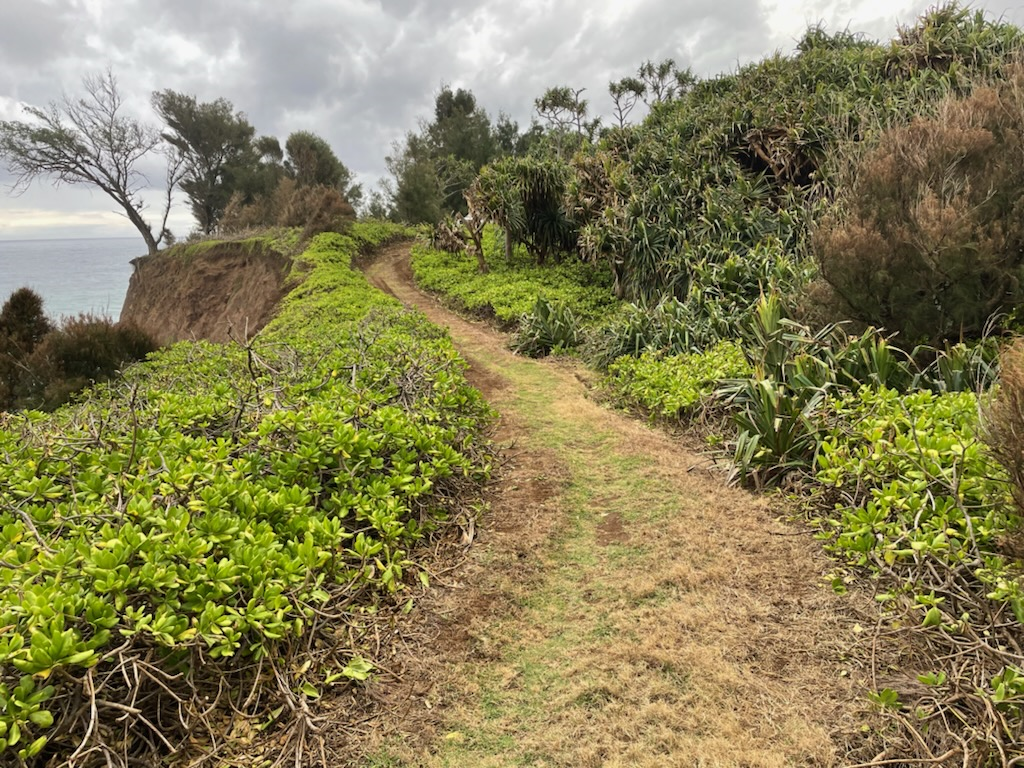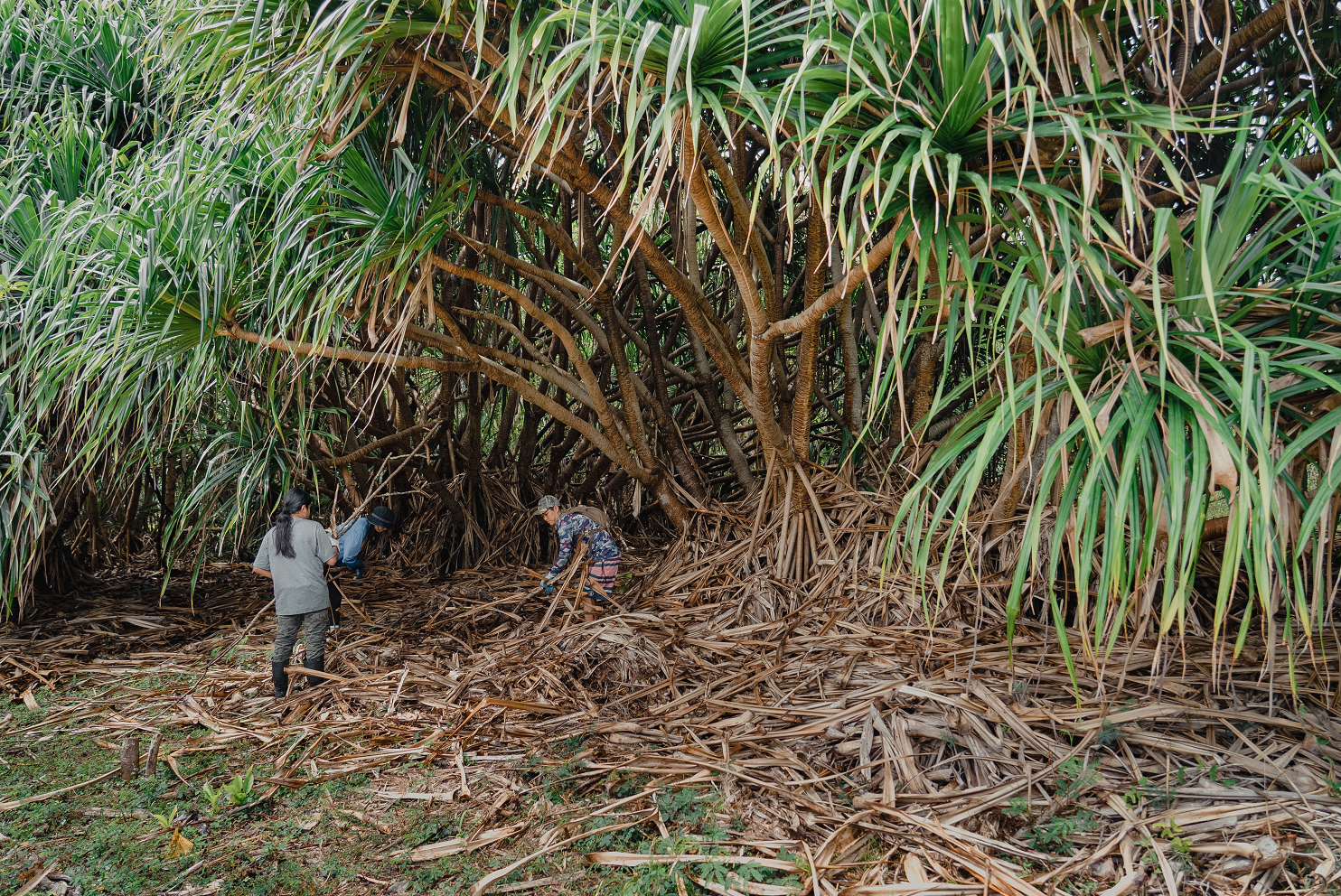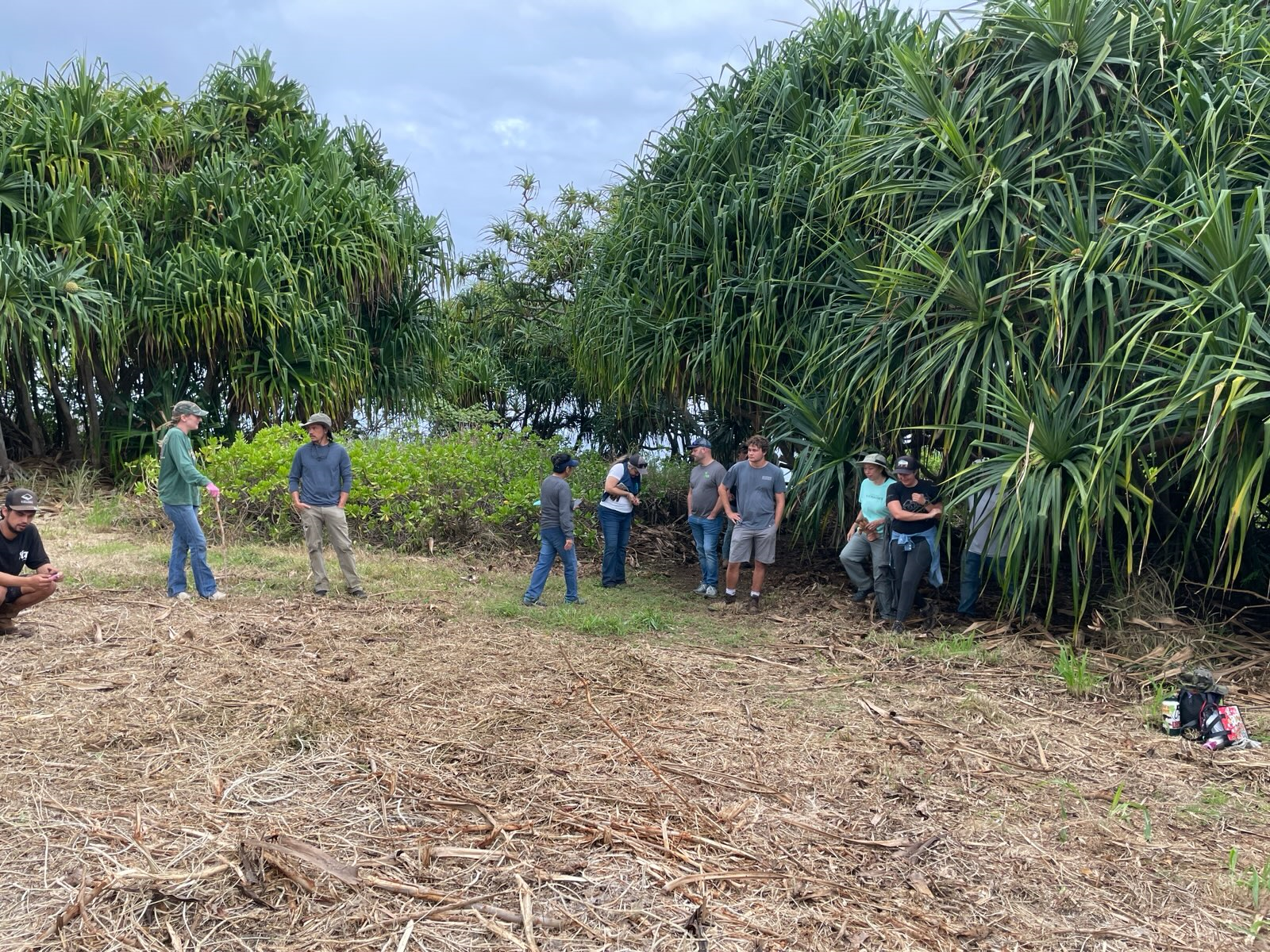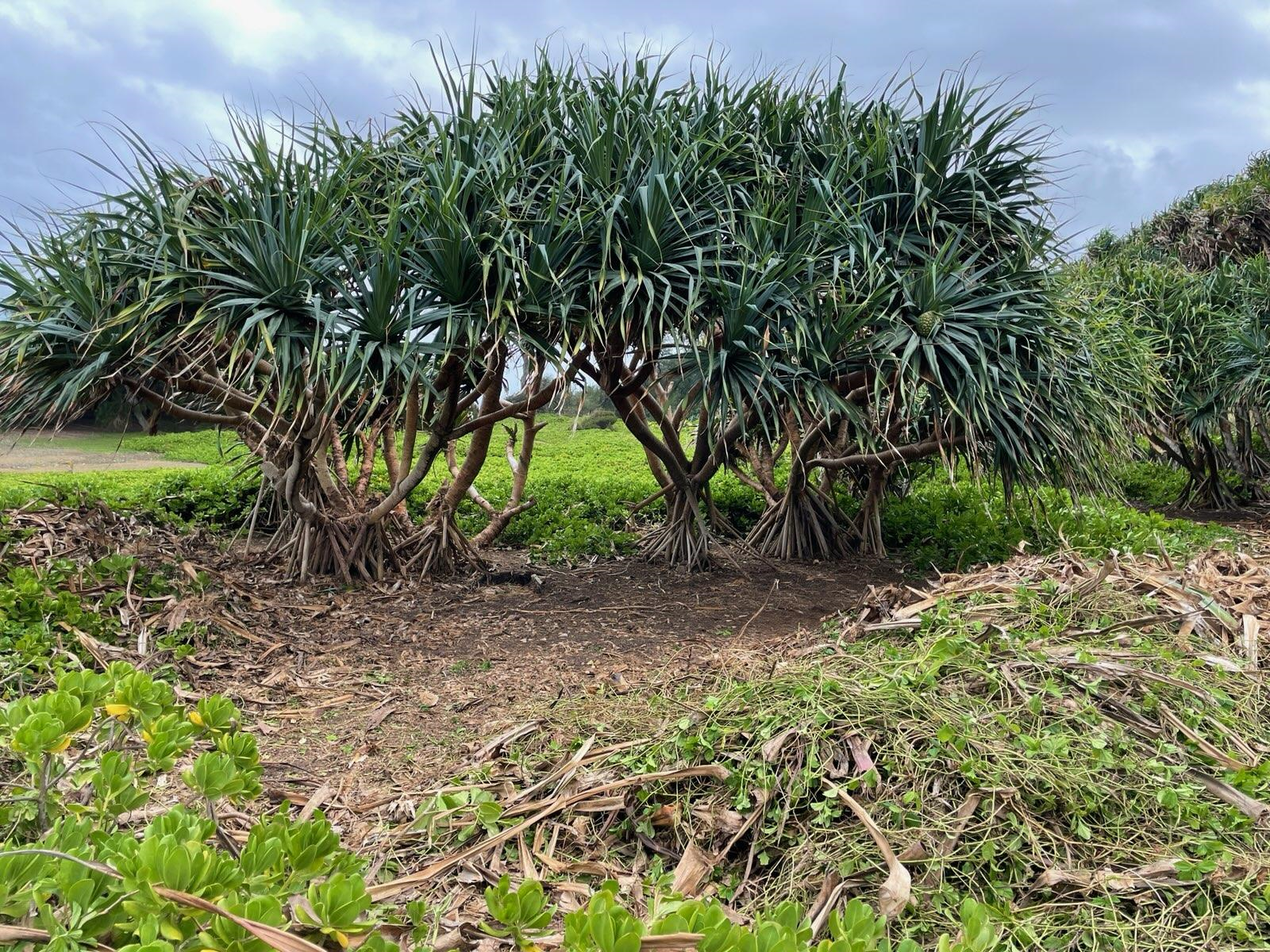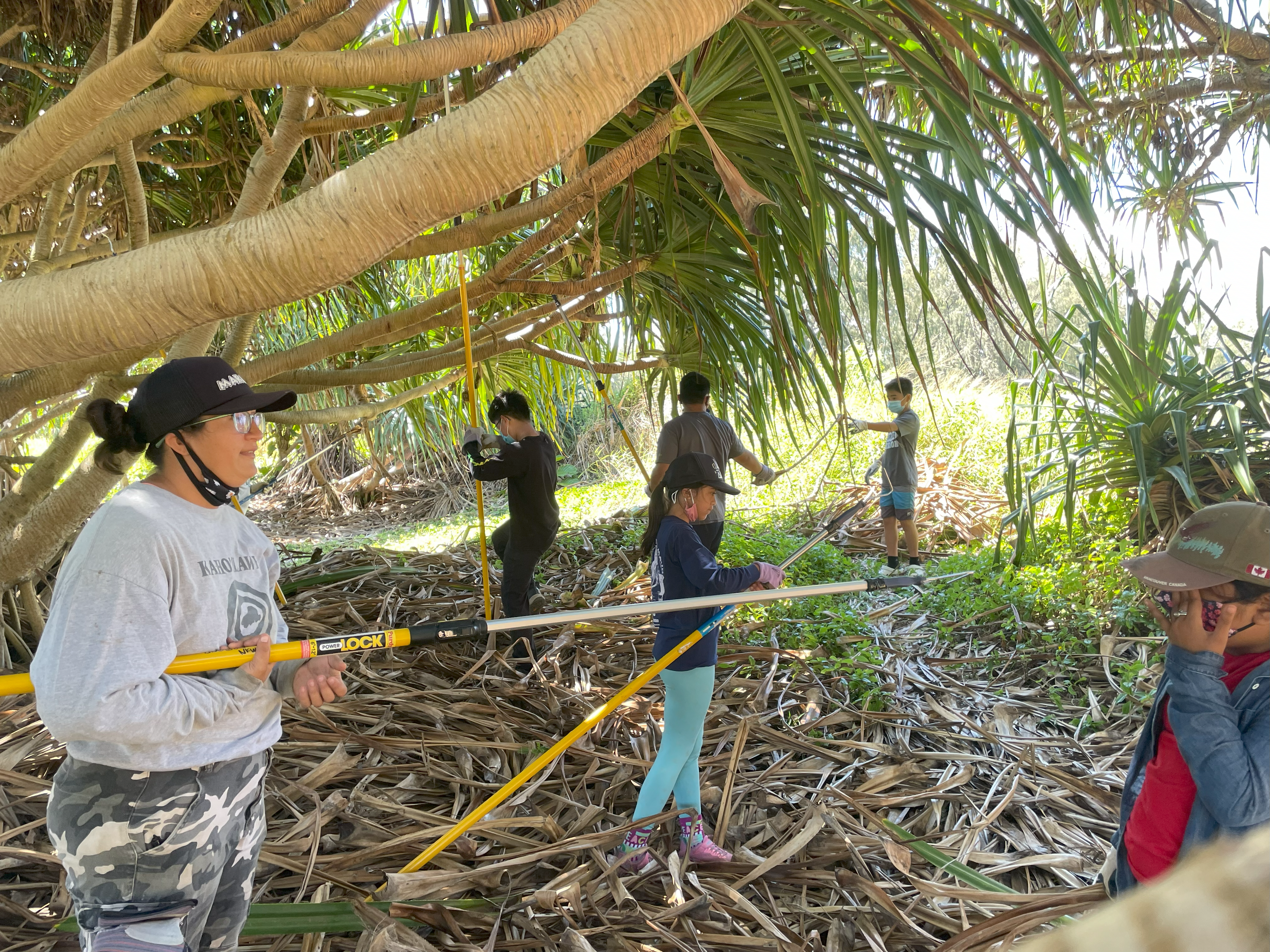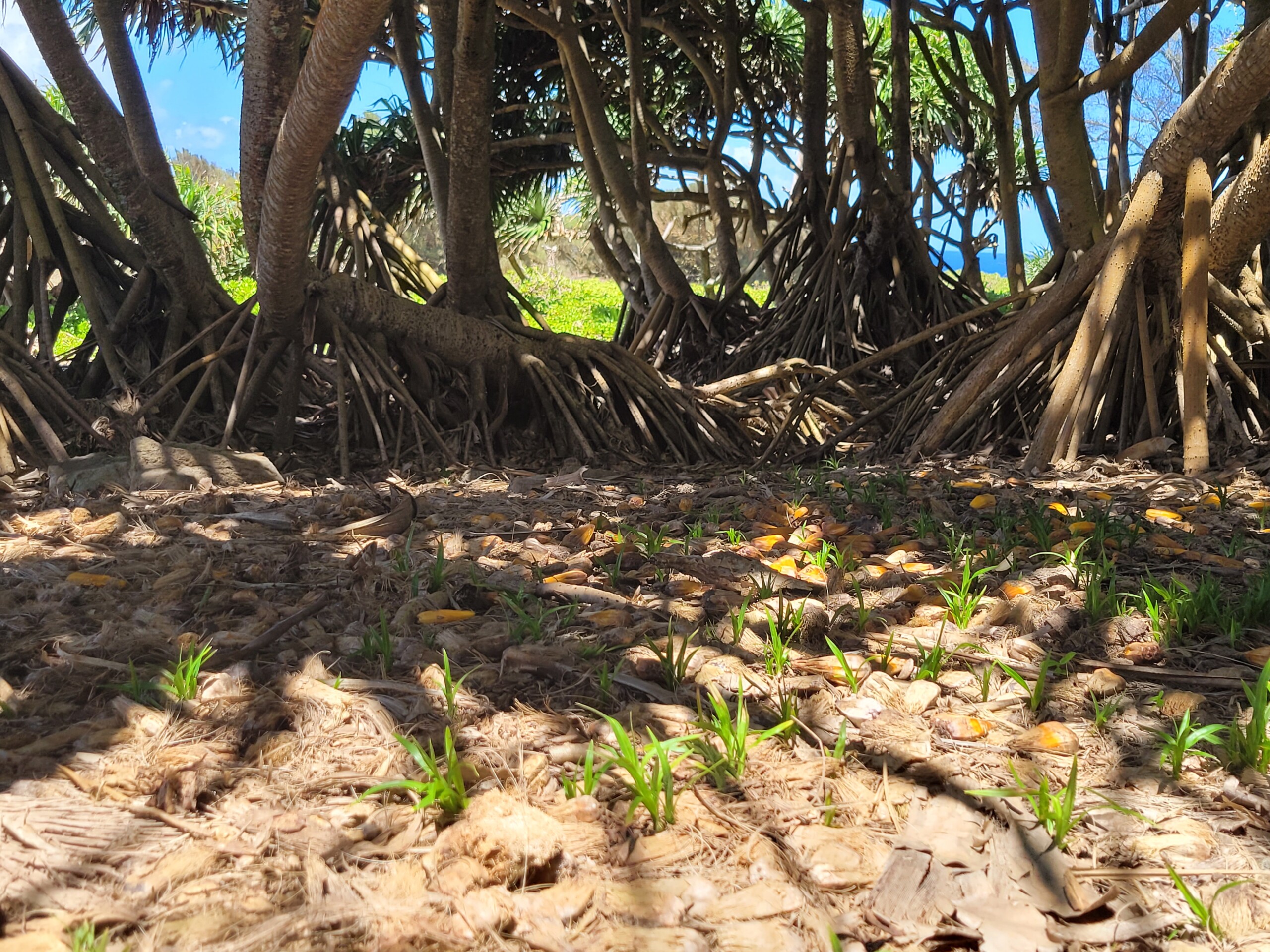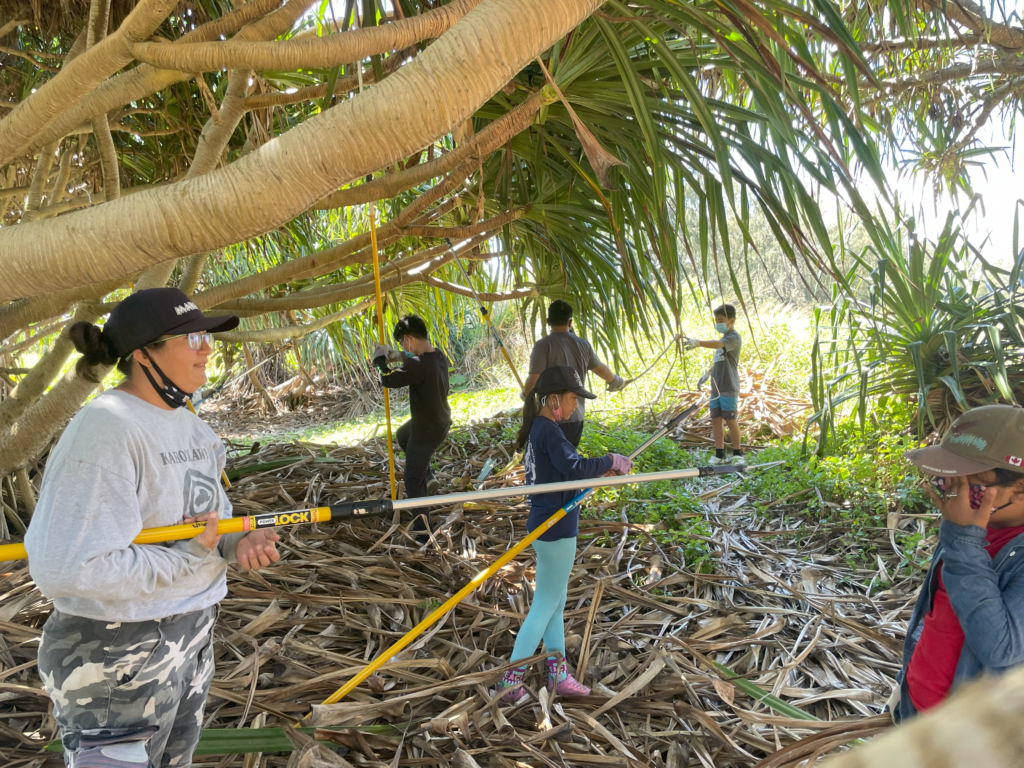
Clearing the canopy of old lauhala.
Hala is happy when birds can fly through.
~Emily Claspell, kumu ulana lauhala
According to Aunty Emily Claspell, you know that hala is happy when birds can fly through its branches and leaves.
Hala is a resilient plant that withstands drought, winds, fires and salt sprays. Each part of the tree has uses critical to the cultural heritage of the people in Hawai‘i: fruit and flowers to eat and to make lei, poles and branches for construction, leaves for weaving, medical use, erosion control, windbreak, as well as shade and shelter.
The Kohala Center—an independent research, education, and ʻāina stewardship nonprofit for healthier ecosystems established in 2000—was gifted 48 acres of historically significant conservation and agricultural land on the North Kohala coast on Hawai‘i Island.
Many practitioners agree that the variety and quality of Niuliʻi hala is the best in all of Hawai‘i.
Niuliʻi hala is the strongest and best, the salt air strengthens and thickens the lauhala. There are very special and rare hala on site that have not been seen in other areas.
~Uncle Maʻulili Dickson, crewmember on the Nā Kālai Wa‘a.
The Kohala Center developed a plan to preserve and perpetuate Niuli‘i by restoring the overgrown and neglected hala groves. Through cultivating and nurturing hala, TKC was able to cultivate their knowledge and enlarge it with the support of cultural practitioners and community stewards.
With funding support from the Freeman Foundation in cooperation with Historic Hawai‘i Foundation, TKC spent two years conducting an ecosystem health assessment with a team of lauhala practitioners and specialists in order to identity the best section of hala in which to focus preservation efforts and restoration planting activities and to target invasive plant species for removal.
The preservation and stewardship plan includes best management practices for implementing an ongoing and sustainable program for the land. The plan is founded on the concept of waihona, defined as a repository, place for keeping things safe.
We looked to ‘āina as a waihona for the natural, cultural, historical and community resources of Niulii.
~The Kohala Center as stated in the preservation plan.
By engaging the community and other participants in caretaker work days, in order to learn and work closely with traditional practitioners and kūpuna, and working with partners, TKC conducted a landscape health assessment and developed a scope of work. The work plan is based on community and educational work days with the themes of “learning by doing” and “putting learning into practice.”
Through the project, workshops were offered with various levels of engagement that included cultural protocols, harvest and care for the hala, lauhala cleaning and preparation, weaving, plant propagation and maintenance, as well as a ceremony and celebration of stewardship commitment.
The workers focused on cleaning the canopy and root areas of the hala trees, removing and trimming invasive plants and encroaching trees, mulching with waste ground cover, and propagating and planning new hala plants or native companion plans. They created a deeper connection with place while skills were built for long term stewardship.
The Kohala Center said that a specific lesson learned was “People connect to ʻāina through cultural activities and hard work and if we don’t provide the opportunities to participate then we lose the opportunities to impact their lives and increase their sense of belonging and kuleana to ʻāina.”
A total of eight acres of native coastal forest was preserved at Niuliʻi by the Mālama Niuliʻi Team, practitioners, community members. The hala groves of Niuliʻi continue to be a treasured site and resource to kūpuna and practitioners of the Kohala community and beyond. Kānaka lauhala (lauhala practitioners) harvest from and care for the hala trees.
This article was originally published in the Historic Hawai‘i News, October 2023.
The photo gallery below highlights The Kohala Center’s preservation of the Hala Groves at Niuli‘i.




